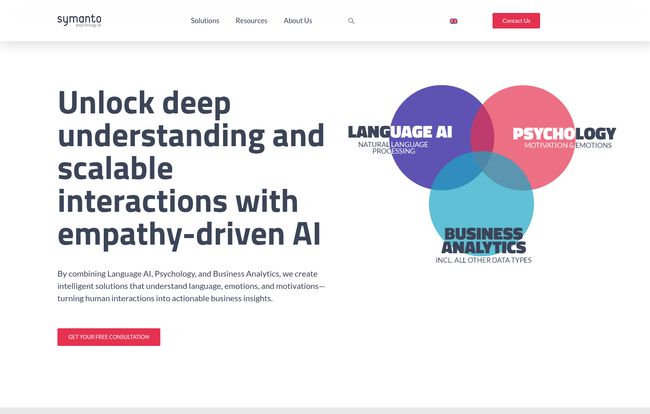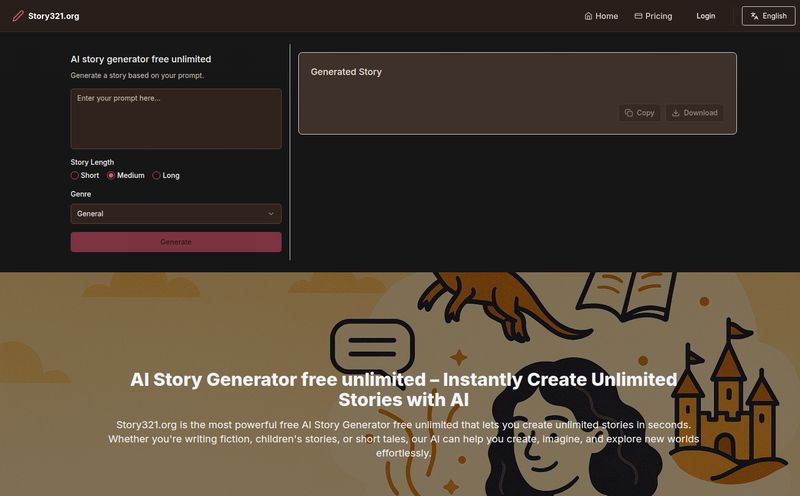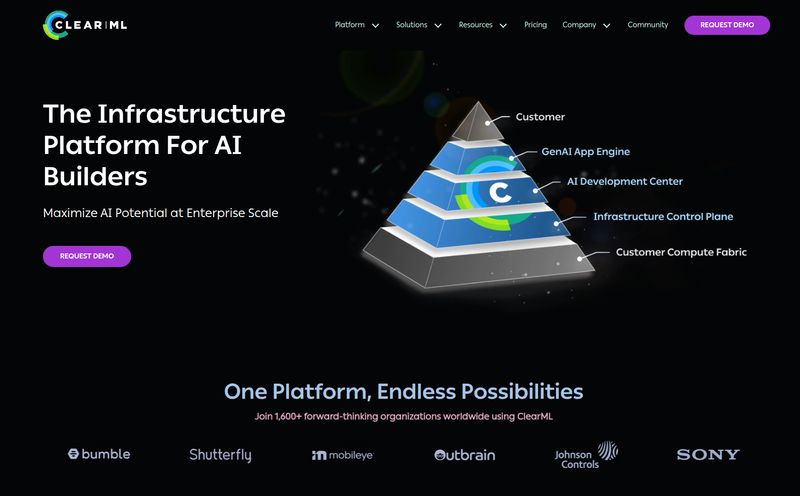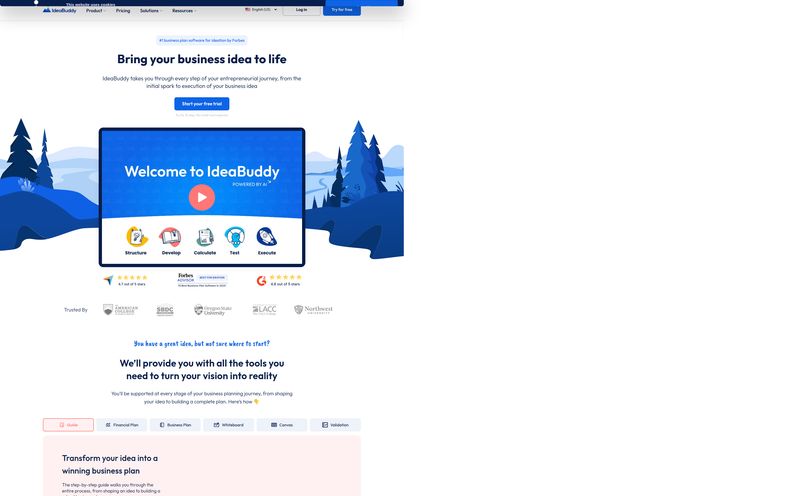As someone who's spent years neck-deep in SEO, traffic analytics, and the wild world of CPC, I've seen my fair share of 'revolutionary' tools. Most of them promise to give you the keys to the kingdom—to unlock customer intent, predict trends, and basically read minds. And most of them, well, they just give you more spreadsheets and charts. More data, but not necessarily more understanding.
We're drowning in data. We know what customers click on, but do we really know why? We can see the angry one-star review, but do we grasp the specific emotion behind it? Frustration? Disappointment? Betrayal? It all just gets lumped into 'negative sentiment'. It’s a bit like trying to understand a novel by only counting the number of words.
So, when I stumbled upon Symanto, I was intrigued. Their whole pitch isn't just about another algorithm. It's about empathy-driven AI. My first thought? 'Okay, marketing fluff.' But then I looked closer. They’re mashing up three disciplines that, on their own, are powerful. But together? It's a pretty interesting cocktail.
What’s the Big Deal About Symanto Anyway?
At its heart, Symanto isn't just another text analytics platform. They position themselves as a bridge between raw data and genuine human insight. The secret sauce, as they present it, is a three-part recipe: Language AI, Psychology, and Business Analytics.
Imagine a Venn diagram. In one circle, you have the raw power of Natural Language Processing (NLP) to chew through mountains of text—reviews, emails, call transcripts, you name it. In the second circle, you have principles of psychology, which adds a layer of understanding about human motivation, personality, and emotion. And in the third, you have good ol' business analytics, the part that makes sure these insights are actually tied to growth and ROI.
Symanto lives in that sweet spot right in the middle where those three circles overlap. It’s not just about identifying if a customer is 'happy' or 'sad'. It’s about trying to understand if they're an anxious buyer, a pragmatic decision-maker, or an early adopter driven by excitement. Now that's a layer of data I can get excited about.

Visit Symanto
More Than Just Keywords: Peeking Inside Symanto’s Toolkit
So how does it actually do this? It's not magic, it’s a suite of pretty sophisticated features designed to dissect language in a way that goes beyond simple keyword matching.
Reading Between the Lines with NLP and Sentiment Analysis
This is the foundation. Of course, they do sentiment analysis. But it feels more granular. The goal is to move past the simple positive/negative binary. Sarcasm, conditional praise, backhanded compliments—the nuances of human communication that often fly right over the head of standard AI—are what Symanto claims to zero in on. For any brand managing a community or sifting through product reviews, this is gold.
Getting Personal with Emotion and Personality Insights
Here’s where it gets interesting. Symanto uses psycholinguistic analysis to infer personality traits based on the Big Five personality model and even emotional states. Are your most vocal customers conscientious and detail-oriented? Or are they open and adventurous? Knowing this doesn't just help you respond to them better; it completely changes how you could market to lookalike audiences. It's like having a focus group that doesn't even know it's a focus group.
Strategic Moves with Market Intelligence & Customer Segmentation
And finally, it all gets wrapped up in a bow for the business strategists. You can take all these deep psychological and emotional insights and use them to create hyper-specific customer segments. Forget segmenting by age or location. How about segmenting by communication style, core motivations, or emotional triggers? This allows for marketing campaigns and product development that speaks to people on a much more fundamental level. It’s the difference between shouting at a crowd and having a quiet, persuasive conversation.
How Does This Actually Help My Business? (Real-World Applications)
This all sounds great in theory, but what does it look like in practice? Symanto breaks its solutions down into a few key areas that make a lot of sense.
For one, their Contact Center - SymantoAssist tool seems incredibly useful. Based on their feature breakdown, they offer different tiers. A 'Professional' plan can handle things like automated call summaries and routing calls based on a knowledge base of up to 50 FAQs in over 50 languages. The 'Enterprise' plan goes even further, with advanced knowledge retrieval from unstructured files (think messy folders of old documents), intelligent routing, and full integration with your existing CRM. The idea is to make your support team more efficient and, more importantly, more effective by understanding the caller's emotional state and personality from the get-go.
Then there’s Voice of Customer (VoC) analysis. Instead of just getting a report that says '20% of customers mentioned pricing', you could get a report that says 'A segment of your most loyal customers, who tend to be cautious and pragmatic, are expressing anxiety about the new pricing structure'. See the difference? One is data. The other is intelligence.
The Elephant in the Room: Let's Talk Pricing (or Lack Thereof)
Alright, so I went looking for the pricing page. And… crickets. There isn't one. This is a classic enterprise SaaS move. No neat little boxes with monthly fees. To get a price, you have to 'Contact Us'.
I get why they do it. A tool this complex probably has a variable cost depending on API usage, the level of integration, and which solutions you need. It's not a one-size-fits-all product. But as a potential customer, it’s always a bit frustrating. My advice? Don't be shy. If you're genuinely interested, book the demo and be upfront about your budget. It's the only way to know if it's a fit.
The Good, The Bad, and The AI-Powered
No tool is perfect. In my experience, it’s all about whether the pros outweigh the cons for your specific needs.
On the plus side, the depth of insight here is really compelling. The fusion of psychology with NLP is a genuine differentiator that could provide a serious competitive edge. It’s a proactive approach to understanding your audience, not a reactive one. They also offer a whole range of solutions, from contact center help to market research, which is nice to see.
However, there are a few things to keep in mind. The biggest one is that the quality of your insights will always, always depend on the quality of your input data. It’s the old 'garbage in, garbage out' principle. If your text data is sparse or low quality, even the smartest AI can't work miracles. Also, integrating a powerful API like this isn't always plug-and-play. You might need some technical expertise on your team to get it wired up correctly. And of course, the lack of transparent pricing means you have to invest time in a sales call just to find out if its in your budget.
Frequently Asked Questions (The Stuff You're Still Wondering)
1. Is Symanto just for big enterprise companies?
While the 'Contact Us for Pricing' model often points towards an enterprise focus, their 'Professional' vs 'Enterprise' breakdown for the contact center solution suggests they may have scalable options for medium-sized businesses as well. The best way to know for sure is to reach out to them.
2. Do I need to be a data scientist to use Symanto?
To integrate the API, you'll likely need a developer or someone with technical skills. However, the insights and dashboards themselves are designed to be used by business strategists, marketers, and customer support managers who aren't necessarily data scientists.
3. How is this different from other sentiment analysis tools?
The key difference is the psychological layer. Most tools stop at 'positive,' 'neutral,' or 'negative.' Symanto goes deeper by trying to identify core emotions (like joy, anger, fear) and even underlying personality traits of the writer, providing much richer context.
4. What kind of data can I analyze with Symanto?
Pretty much any unstructured text data. This includes customer emails, support tickets, call transcripts, open-ended survey responses, social media comments, and online reviews. The more conversational the data, the better.
5. How accurate is the AI?
Symanto highlights their deep learning expertise, with over 80 research papers published and partnerships with academic institutions. This suggests a strong commitment to accuracy and a model built on solid research, though real-world accuracy will always vary based on the specific data being analyzed.
So, What's the Final Verdict?
I have to say, I'm genuinely impressed by the concept behind Symanto. In an industry flooded with tools that just offer more data points, their approach feels like a step in the right direction—towards more wisdom. It’s a move from quantitative to qualitative analysis, at scale.
Is it the right tool for everyone? Probably not. If you're just starting out and need basic analytics, this might be overkill. But if you're a business that's serious about customer-centricity, if you're struggling to understand the 'why' behind your data, and if you have the resources to invest in a premium tool, then Symanto is absolutely worth a closer look. It might just be the translator you need to finally speak your customer's language.
Reference and Sources
- The official website and product information were sourced from Symanto.com.
- General concepts of NLP were cross-referenced with foundational articles like the Wikipedia page on Natural Language Processing.



